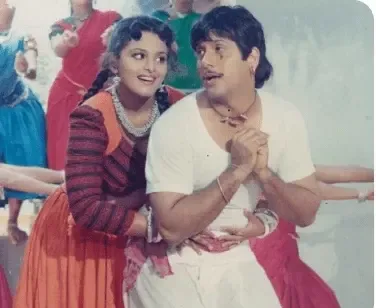
By: Asjad Nazir
THIS week marks three decades of something quite remarkable in Bollywood that is still hard to understand. That phenomenon also kickstarted a trend in Hindi cinema that has deeply divided audiences since then. It all started with slapstick comedy Aankhen releasing with zero expectations on April 9, 1993, and going onto become the highest grossing Hindi movie of that year.
The absolute stinker massively outperformed cult classics released in the same year, including Shah Rukh Khan’s star-making movies Darr and Baazigar. Other iconic films it bettered in 1993 included Khalnayak and multi-award-winning romantic comedy drama Hum Hain Rahi Pyar Ke, along with mega-budget movie Roop Ki Rani, Choran Ka Raja, which was headlined by the two biggest stars of that time Anil Kapoor and Sridevi.
Even the greatest minds haven’t been able to figure out how a terrible film that made little sense, headlined by Govinda on a career slump, and a struggling Chunky Pandey clocked up the blockbuster success it did. Apart from hit song O Lal Dupattewali and a few funny scenes, there really wasn’t anything that suggested it would become so popular. It had borrowed heavily from multiple much better movies and kickstarted the ‘leave your brains at home’ comedy genre which would entertain some Bollywood fans and annoy others.
The film’s director David Dhawan and writer Anees Bazmee would be at the forefront of these slapstick comedy films powered by overacting and brain-deadening stories that made little sense.

Aankhen reinvigorated Govinda’s career and turned him into the comedy king of the 1990s with similar such movies, with many of them being directed by Dhawan. (Unfortunately, for Chunky Pandey, Aankhen benefitted everyone involved except him and his career as a leading man quickly faded away). The comedy would give rise to successful franchises like the Golmaal and Housefull movies, along with turning other badly written films that made little sense into box-office sensations. But most in the genre failed at the box office, including recent Christmas disaster Cirkus, which like Aankhen was based on a mistaken identity premise. So, in many respects, it arguably did more damage to Hindi cinema in the long run.
While certain sections of the audiences who have greatly enjoyed these types of comedy films may look back with fondness and want to celebrate Aankhen turning 30 this week, cinema purists can blame it for infecting Bollywood with a mindless genre that continues to be virus like today. These foolish films have arguably given rise to bad writing in Bollywood, which has spilled over into other genres.
For me, Aankhen is a blight on the Bollywood landscape and can be directly blamed for torturing the brains of many, including mine, with similar movies that it inspired, powered by silly overacting and nonsense stories. Despite having a few mildly entertaining scenes, Aankhen remains impossible to sit through. 30 years later. I still don’t understand how it became the biggest Bollywood hit of 1993 and why it has been watched over 115 million times on YouTube. But it did become a landmark movie for many, and not always for the right reasons.
